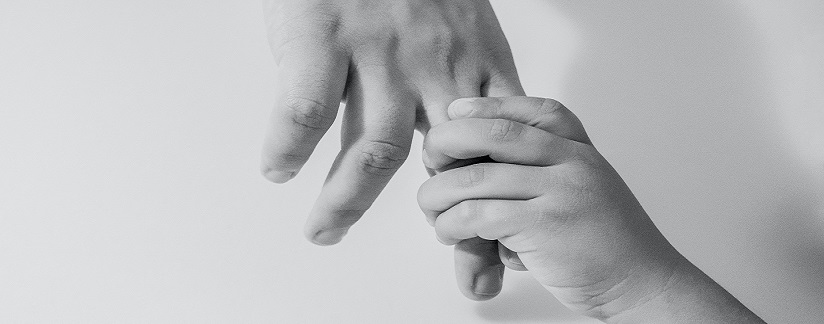The beginning of it all: Melanie Klein’s perspective on child development
01 March 2022
According to a Finnish saying, a sleeping baby is one of the four things in life that one cannot stop beholding (the other three are a river flowing, a fire burning, and somebody else working). You might now be contemplating in your mind the image of a baby asleep in her coat, her arms at each side of her slightly turned head, the soles of her feet joined. It is an image of stillness, tranquillity, and utter fulfilment. An image of abandonment and infinite trust. An image congruent with age-old conceptions of babies as untouched by the worries of life, innately good, pure.
Suddenly, and outrageously for the European mind at the turn of the 20th Century, Sigmund Freud, the discoverer of psychoanalysis, unsettled the image of the innocent baby. While studying the difficulties of his suffering patients, Freud traced their development to the origin of the human mind. What he saw was a baby traversed by urgent psychological needs and shaken by powerful emotions. Particularly disturbing were the desires that he uncovered in the child to break the unity of the parental couple in order to have full control over each parent in turn and never having to feel left out, an unbearable experience for the baby's young mind. Whereas the thoughts of a baby's ambivalent feelings of love and hate for her parents can be disquieting, understanding the stresses of a young mind allows a more considerate and, ultimately, more loving responsiveness to her needs.
This might have brought to your mind the image of a desperately crying baby woken up by an incomprehensible terror that would not be assuaged by the parent’s caring voices, by their holding and gentle cuddle, by the fresh nappy or the warm food. What could possibly disturb a tiny baby so much? So much, in fact, to make her parents sick with worry that she might be unwell, perhaps so unwell that she might die? If the baby you thought of is a little older, you might have visualised her tantrums, her stubbornness, her seductiveness, perhaps, her jealousy. What could possibly unsettle so much such an otherwise loving child?
In the years following Freud’s discovery, a number of psychoanalysts expanded our understanding of what drives the birth of the mind and its development. Compelling advances were introduced by Melanie Klein, another Austrian psychoanalyst who later in life moved to London. Her discoveries took shape through debates, often conflictual, with other psychoanalysts, including Freud's own daughter Anna. After all, parents often argue over how best to raise their children, and their conflicts become tenser when their babies struggle the most. Those early psychoanalysts, like new parents of a fledgling discipline, were discovering on the job all they ended up learning. Today, thanks to those “parental” arguments (painful, to be sure), we know a great deal more about the mind of children, and we can better attend to their needs. We have a healthily growing psychoanalysis too.
Melanie’s Children
Klein expanded Freud’s intuitions about children and developed a model of the mind from the very beginning of the infant’s life. That model of mind is pregnant with inspiring insights and potential for further developments. What is then Klein’s model of child development? How did she learn what she knew about the minds of children? Let us start with the latter question. Klein had a great experience of children, her own three, and the many she treated since the beginning of her career as a psychoanalyst in Berlin in the early 1920s, often children with severe mental difficulties. The majority of psychoanalysts, in those years, thought that either children did not have an unconscious or their unconscious was inaccessible because of their lacking a sophisticated verbal language (after all, psychoanalysis had established itself as the "talking cure").
Klein allowed that children’s verbal language is limited. However, and this was her compelling suggestion, what language is for adults, play is for children. Their unconscious can then be observed at work as children play or by the way their play is stifled or inhibited. By studying children’s play (and in the process helping them to overcome their difficulties), Klein advanced a sophisticated theory of psychic development. These are her basic ideas. Children are born, like all mammals, with an innate expectation to find a source of nourishment. From the very beginning, therefore, they are driven to find it. Not knowing what this looks, feels and acts like, they may find it difficult to recognise it. As many parents have experienced, the initial negotiations between the newborn and the breast or the bottle can sometimes be difficult, and some babies struggle at first to latch on and suck successfully.
As the relationship is established, Klein found that babies experience the breast not as a single object but as two objects. The breast that feeds and the breast that, by withholding its milk, is felt as causing hunger. Recall the distressed cry of a hungry baby. That distress vividly illustrates how, for the baby, her hunger feels like an attack to her very life. Klein explained that such is the challenge to the baby that the absence of breast is felt like the actual presence of a bad breast inside the baby’s body. As this experience is repeated, day after day and several times a day, the baby forms an idea, a representation in her mind, of two different characters, a good one and a bad one. She is still unable to tell that "in reality", there is only one breast and one mother in the real world out there. We can say that her mental representation is not reality-based; it is not truthful.
Eventually, only a few months old, the baby discovers that these two objects, the loved and the hated breast, are the same and belong to a larger and much more complex object, the mother. This experience of integration can be imagined as the cracking of an existential enigma, the answer to why life swings back and forth between the poles of pleasure and un-pleasure. However, this is an unsettling experience. Now, fairy and witch are not two separate characters in baby's life battling against each other for the possession of baby; they actually are one and the same person, mummy!
This discovery overwhelms the baby as she now realises that the hatred she felt towards the witch and the damage she believes she has inflicted through her hateful thoughts and destructive fantasies were actually inflicted on her loving mother. Now the baby faces a fundamental dilemma. She can repair the harm done (most often to the image of mummy she carries in her mind rather than to the actual mother) or disavow it so as not to have to feel her overpowering guilt. The baby will probably try both strategies, but eventually, reality will impose itself, and she will commit to repairing the harm done.
Repairing to grow
As the harm was mostly done to the image of the mummy that the baby constructed in her mind (though babies do also sometimes bite the nipple that feeds them), it is that image that the baby needs to repair. When the representation in the baby's mind of her actual mother is repaired, not only her relationship with her actual mother becomes whole and fulfilling, but also all her relations do too. Reparation, however, is a fraught process. Sometimes it can be tinged with omnipotent beliefs of control and agency. The baby may believe that she can put things back “as they were” instead of accepting reality as it is, instead of accepting that mother is both fulfilling and frustrating at the same time. Mental growth is stunted if this omnipotent belief prevails.
Klein was acutely aware that acquired behaviour is inscribed on constitutional dispositions. The baby’s ability to repair, however, depends largely on what she learns from her parents. Although there is often a stress on directive teaching, children learn more through identification than from instruction (however often they are told, "Do what I say, don’t do what I do!”). This means that, sometimes, the child identifies with parents who, more or less severely, struggle to repair their internal objects and their relationships. Recall the baby's difficult encounter with food mentioned above. Parents, too, can find this experience distressing. Baby’s struggle to take in the food offered can feel to the parents as a rejection of what they have to offer or of them as parents. Parents of a new baby are particularly vulnerable to the resurfacing of their unresolved difficulties, and this can complicate the initial interactions with their baby and with each other. What the baby introjects is, in this case, the nursing couple’s difficulty to mourn the loss of the perfect parents they wished to be and of the perfect baby they wished to have as they experience who they really are as the parents of their actual baby. As the ability to mourn of each parent and the resilience of their relationship informs the child’s ability to mourn, we also realise how the ability to mourn, repair, tolerate reality, and care for our loved ones goes down through the generations. This also is the case, that traumatic experiences may be forgotten to memory, yet they live on as our unconscious difficulty to mourn, to relate, to bear reality, and, ultimately, to grow.
To know more about psychoanalysis, good places to start are the British Psychoanalytic Council, the British Psychoanalytic Association, and the Institute of Psychoanalysis. This last, in particular, the oldest society in this country, offers introductory lectures on psychoanalysis that provide a wide overview of the main concepts and practices of psychoanalysis. Much educational material is available on its website. Also of note, is that all psychoanalysts apply sliding scales to their fees to allow those who wish to have an analysis to find one they can afford. Moreover, both the British Psychoanalytical Association and the Institute of Psychoanalysis offer very low fee psychoanalyses.


Comments
Write a Comment
Comment Submitted